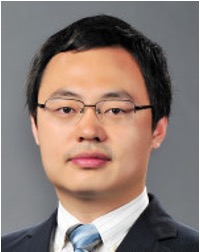Machine Learning-driven Discovery
of New Thermal Transport Mechanisms in Porous Materials
Han Wei1,
Hua Bao1*, Xiulin Ruan2*
1 University of
Michigan-Shanghai Jiao Tong University Joint Institute, Shanghai Jiao Tong
University, Shanghai 200240, China;
2 School of Mechanical
Engineering and Birck Nanotechnology Center, Purdue University, West Lafayette,
Indiana 47907, USA
ABSTRACT: In material science,
machine-learning algorithms have been successfully applied to predict material
properties, but they are rarely used to uncover new physical mechanisms. In
this work, we aim to use machine learning to facilitate discoveries of
exceptions beyond accepted knowledge and demonstrate the new research paradigms
that promote the development of theoretical studies. Manipulating the thermal
transport in nanostructured materials is of great significance for promoting
heat dissipation in electronic chips and improving the energy conversion
efficiency of thermoelectric materials. Previous studies have found that in nanoporous
materials, random pores can lead to reduced thermal conductivity than the
periodic pore arrangement. This is because the random arrangement induces the
localization of heat carriers, phonons, thereby hindering the transfer of heat.
In this work, we investigated the thermal transport in nanoporous graphene with
disordered pore arrangements. First, we attempted a manual search for random
structures with possibly higher thermal conductivities than the periodic
structure. Molecular dynamics simulations were performed to calculate the
thermal conductivities of 21 random porous graphene structures, which are all
lower than the periodically arranged one. To search more efficiently, we
proposed a "two-step" search method based on genetic algorithm.
During genetic algorithm optimization, thermal conductivities of candidates
were computed by solving the Boltzmann transport equation, which is a less
computationally expensive model. BTE simulation is carried out for
pre-screening and then NEMD simulation is performed to validate the optimal
configuration found by genetic algorithm. The total computational cost needs to
be highlighted. In the unsuccessful manual search, about 67200 core hours were
spent, while no disorder-enhanced case is found. For the successful genetic
algorithm enabled search, with only 6604 core hours, two disorder-enhanced
cases were found. Therefore, this genetic algorithm enabled two-step search
strategy largely reduces the computational cost while increases the probability
of success.
Through
an in-depth analysis of the characteristics of the porous structure with high
thermal conductivity, it is found that the enhancement of thermal conductivity
of disordered configurations was attributed to the particular pore
arrangements. Inspired by observation, we proposed two structural parameters—shape
factor and channel factor, to describe the characteristics of pore arrangement.
Further study shows that the shape factor and the channel factor play an
important role in the heat conduction of porous graphene. Their effects far
exceed the phonon localization effect, which leads to the enhancement of
thermal conductivity. Further regression analysis shows that the shape factor
and channel factor have strong positive correlations with thermal conductivity.
These two new physical parameters can be used to establish a prediction model
for fast predicting the thermal conductivity of nanoporous structures.
Besides
nanoporous materials, the microscopic morphology of the pores will also
significantly affect the heat transport of the porous media in the macro scale.
However, existing effective medium approaches usually miss morphology effects.
Although numerical simulation can capture the structural information, they are
expensive and not physically intuitive. Machine learning methods have recently
been successful in predicting effective thermal conductivity, but the lack of
descriptors limits physical insights. In order to accurately predict the
thermal conductivity of porous media and at the same time guide the understanding
of heat transfer mechanism, developing physics-based descriptors to quantify
the complex morphologies in porous media is highly desirable. Therefore,
besides shape factor and channel factor, we proposed other three structural
descriptors to characterize the structural characteristics of porous media:
bottleneck, perpendicular nonuniformity, and dominant paths. The anisotropy of
the shape and distribution of pores can significantly affect the effective
thermal conductivity of porous media, which can be effectively quantified by
these descriptors. They have strong correlations with thermal conductivities
and the machine learning model based on these descriptors can accurately
predict the thermal conductivity of porous media with complex morphology.
Keywords: machine learning; genetic algorithm; optimization; porous media; effective thermal conductivity; structural descriptor

Hua Bao received his B.S. in Department of Physics from Tsinghua University, China, in 2006, and obtained his Ph.D. from Purdue University in 2012. He is now an associate professor at Shanghai Jiao Tong University. He visited Purdue University in 2014 and Clemson University in 2016 as a short term visiting scholar. His research interest is micro/nanoscale thermal energy transport, and the applications for thermal management. He has published more than 60 journal papers on relevant topics, including Nature Communications, Physical Review B, and International Journal of Heat and Mass Transfer, etc.